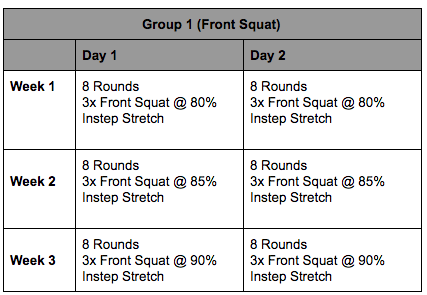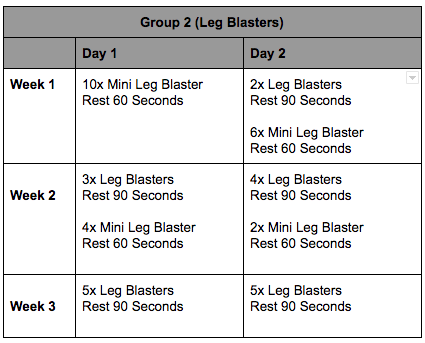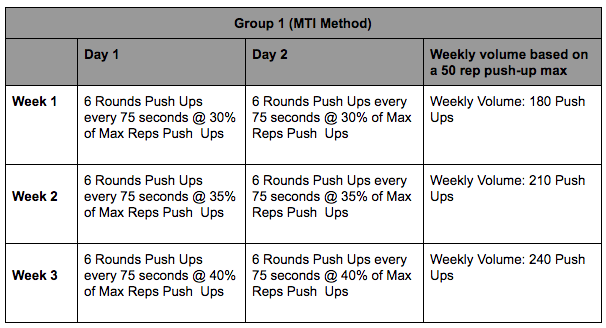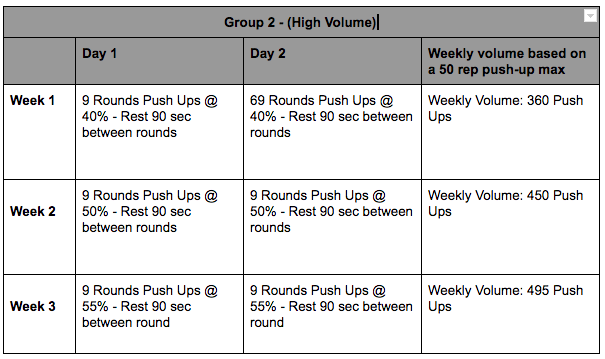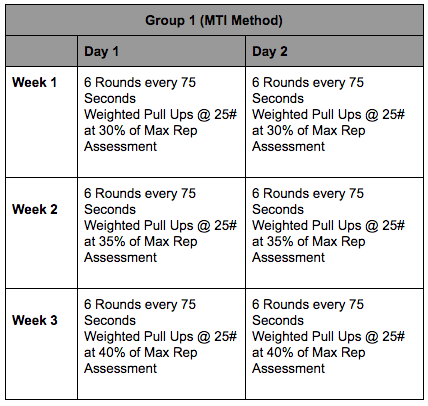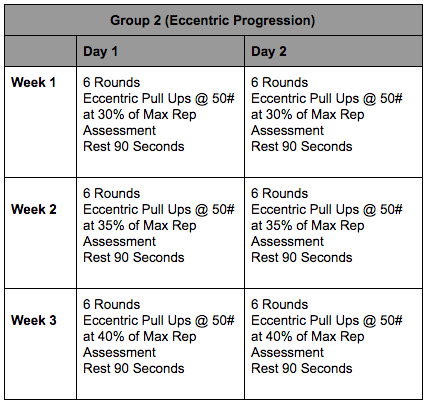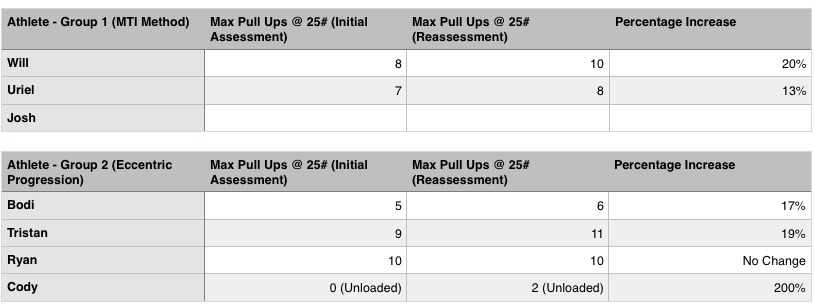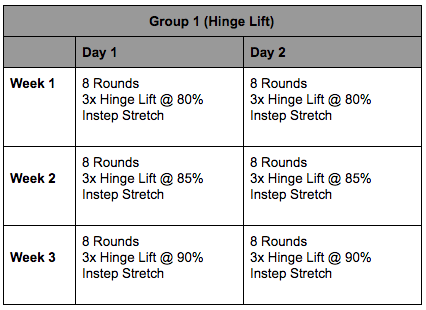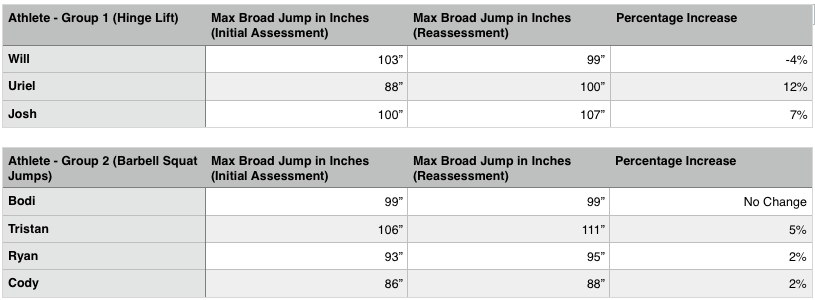KUDOS ON THE 100 MILE ULTRA RUNNING TRAINING PLAN
“Rob,
Just wanted to give out a huge kudos to you and your 100 Mile Training Plan. I just completed the Bryce Canyon 100 in 33:45 with the use of your training plan. This is the fourth 100 I’ve completed and I’ve used various other plans and expensive coaches, your plan crushes them all in my opinion.
For the first time in all my training I enjoyed all the workout sessions, I could see week to week improvement in my speed, strength, and endurance.
One of the most impressive things I saw from the training plan during my race was my consistent speed across the course and the distance. This was most impressive to me because I live in Chesapeake, VA where the highest hill is an over pass and 99% of my training is done on flats, while the Bryce 100 has 18,800 vertical gain.
I also credit my quick recovery to your plan. While I had a few aches and pains following the run, with in a few days I was back to a relatively normal range of motion. I also never really felt “beat up” like I have during past 100’s and I credit that to the strength and chassis work programmed in.
Huge thanks to you and your training plan for helping make my run a success. This will be my go to plan for all my ultras.
Thanks again”
QUESTION
I’m about halfway through the Post-Rehab Leg Injury Training Plan following a bunionectomy. My podiatrist cleared me for getting back to normal training and this training plan has been great, though I feel pretty broken down and beat up by the end of the week. I work as SOF support, so when I finish the Post-Rehab plan should I go straight over to the Daily Operator sessions or do you recommend something before that like the Bodyweight Foundation and/or Military On-Ramp? I’m trying to be conservative to let my body get some strength, mobility, and balance back, but I don’t want to be so conservative that I’m holding myself back from good training. What are your thoughts?
ANSWER
Our stuff is no joke, but it’s end goal isn’t a beat down, but military-specific fitness. Keep grinding, watch your diet, and your fitness will steadily improve.
– Rob
QUESTION
I am prior service army and currently an emt attending paramedic school. I have been considering re enlisting after I am finished with school and even if I do not I will be attending a fire academy and head down that road. Training is a big part of my life but I fell into the classic powerlifting mentality and blew up to about 290 after the army just trying to get strong as possible . Have now realized the importance of balance and that I do not have to be fat to be strong.
My problem is I don’t not want to get weak but I also do not know how to program conditioning into my plan and I am pretty limited on time these days due to school.
So I guess my question is which program would you recommend for someone who wants to increase work load, endurance, condition but also maintain strength at the same time.
Just to give you an idea of my future goal path . I would like to complete the 666 challenge. 600 deadlift 600 squat competition and within a week of that a sub 6 min mile.
Can you help me down the right path. Thank you for what you do and I hope you have a good days.
ANSWER
I don’t have a plan for you 666 Challenge …. which is a pretty awesome challenge!
From our stuff I’d recommend
357 Strength. 357 deploys our 357 strength training methodology which combines heavy strength work with complementary, short/hard work capacity efforts. The plan also includes long Chassis Integrity circuits which have a strong significant component and you’ll do some distance running mid-week on Wednesdays.
Click on the product page from the link above and hit the “Sample Training” page to see the entire first week of programming.
– Rob
QUESTION
Does the Military On-Ramp program provide a strength training segment? Like 1RM or 2 @ 85% of 1RM? Thanks.
ANSWER
Yes.
Below is the weekly schedule:
- Monday: Bodyweight Strength, Work Capacity (sprint intervals)
- Tuesday: Dumbbell Strength, Chassis Integrity
- Wednesday: Ruck Run (begins at 3 miles/25# and builds to 3 miles/65#)
- Thursday: Strength, Work Capacity (gym-based, multi-modal)
- Friday: Endurance (3 mile run assessment or 1 mile intervals based on the most recent assessment)
Go to the product page HERE, and click “Sample Training.” There you’ll see the entire first week of programming and you can see the type of strength progressions deployed.
– Rob
QUESTION
Rob & Crew,
Long time fan. You recently put out an article listing the push-press, rope climb, craig special, 3 mile ruck run, and sandbag get-ups as the top 5 exercises for military athletes. My question: is there a program, or a plan for a program in the future that focuses on improving these 5 exercises? Seems like a good place to get some work done.
ANSWER
We don’t have a current plan limited to these exercises. I’ll put it on the list for a future plan.
From what we do have, I’d recommend
Valor.
– Rob
QUESTION
I am enlisting into the Marine Corps. I leave for basic training in October so at this point I have 17 training weeks available to get myself into better shape. I plan on attending Basic Reconnaissance Course upon completion of basic training and School of Infantry.
At this point in time I have gone from 190 lbs to 160 lbs within a 3 1/2 month period. I have made significant improvement in my physical ability, in my opinion. The initial IST I took I did 3 pull ups, 67 crunches and a 11:38 mile and a half (push ups was not tested). Last week was my most recent IST and I did 13 pull ups, 102 crunches, 47 push ups and a 9:25 mile and a half. There is still plenty of room for improvement so with that here are my actual questions.
I plan on using your plan the last 9 weeks prior for basic training. What plan or program would you recommend I go on prior to yours? Maybe the MTI Relative Strength Assessment Training Plan?
I also need to vastly improved my swimming and rucking capabilities would I be able to utilize the Swimming and Rucking Improvement plan while on your plan or should that be completed prior to yours?
In regards to nutrition is there any advice or guidance you can give to help build muscle mass? I understand that I need to be in a Caloric surplus but how much of one? Would this be possible during your programming?
Lastly I don’t have access to the USMC O-Course, is there any type of substitution for this event?
I greatly appreciate you putting your time and energy into a plan like this to help others achieve their goals. Thank you in advance.
ANSWER
2. You can double up Humility with the Swimming Improvement Training Plan via 2-a-days.
3. Focus on performance, not muscle mass. Excess muscle will just slow you down for the course.
Here are our nutritional guidelines.
– Rob
FOLLOW UP
In regards to the Load Bearing Vest. Is there any brand MTI suggest is a good brand or endorses? Also what find would be good to use for the swimming portion of my training?
FOLLOW UP ANSWER
Swimming – take the day off as rest.
– Rob
QUESTION
I am looking to purchase one of your plans but would like to see what you recommend based off my current level of physical fitness and occupation. I recently received my commission as a 2LT in the Military Police and will report for BOLC in early September. Although I am in decent shape and very strong I would like a plan that would help make me more functional. Most all of your plans seem to work to that end but I would like to focus on these areas:
- Running speed and endurance
- Functional strength development
I did your APFT prep plan and saw considerable improvement in my push ups, sit ups and run time but would like to improve my work capacity, cardiovascular endurance and functional strength. What are the key differences between the Fortitude, Humility and Resilience programs and which, or what other program, might you recommend for me?
Thank you and I look forward to hearing back from you!
ANSWER
By my count you’ve got 11 weeks. Here’s what I recommend:
Weeks Plan
Good luck! Excited for you!
– Rob
QUESTION
I have been currently working through the sfod-d plan, seeing as I was anticipating attending that selection. However, it looks like I will have to go the green beret route first then take the delta selection. My question is, will the sfod-d plan suffice to prepare myself for sfas, considering it is ruck intensive, and in my opinion much harder? Thank you for your time.
ANSWER
As I understand it SFAS is significantly different than SFOD-D on the fitness side, primarily because of the team events. There is a reason we have separate selection plans for each.
At a minimum I’d recommend replacing every other long weekend ruck in the SFOD-D plan with a long multi-modal mini-event.
– Rob
QUESTION
I have been following your web site for a few years. I am impressed at how you attempt to validate your methods with lab testing and down range validation.
I followed the AMGA Alpine Guide course before a rigorous ice, rock and ski touring trip to CO and my only regret is not buying the plan sooner(not enough time to complete).
My wife and I are planning a trip to the Grand Teaton in September and were thinking of using the Rainer plan before we go. I am not sure my wife is ready to jump into the commitment (the description of 2-a-days is intimidating) of the Rainer plan yet. Do you have a recommendation of a plan to prep us for the Rainer plan?
ANSWER
– Rob
QUESTION
I’ve previously purchased some amazing programs from you folks (On-Ramp, APFT Improvement) and I’m looking to make another purchase – but I’m needing some assistance in choosing the right program to fit my needs. I’m a reasonably fit Soldier – 260 on my last PT test (although working to improve run time) and can maintain a sub 15 min mile on a ruck – but I’m looking to really take my fitness to another level which I would classify as almost an on-ramp to Pre-Ranger/Pre-Selection kind of plan. Would you recommend just purchasing one of those programs and scaling or would you advise a different plan all together? I was also potentially looking at the Athlete’s Subscription to have access to all but still in the same boat of which program would best fit my needs.
ANSWER
– Rob
QUESTION
I’d like to get started on a MTI program straight away. Here is my situation: No history of serious, consistent strength training. Casual crossfit for a year, but realized baseline strength and body awareness was lacking; lots of dumb injuries. I am 12-18 months out from a basic LE academy. 33 year old, 6’0, 175; would be considered ‘skinnyfat’ by most; a little hypertrophy probably wouldn’t hurt.
I’ve looked through your programming and I see number of ways to go; would you suggest particular path forward?
Looking forward to getting started. Thanks for taking the time to answer these kinds of questions.
ANSWER
– Rob
QUESTION
Rob, can pull-ups fit in somewhere in the APFT program? Thanks.
ANSWER
Yes. Add a pull up assessment to APFT (max pull ups, no time limit) and follow the same progression as the push ups and sit ups.
– Rob
QUESTION
I started training this spring with an ultra pre-season training plan and have since transitioned to the 50-mile ultra race plan in anticipation for a 50k trail race I have coming up in July. My race will happen on week 7 of the ultra plan, which is leaving me to wonder about tapering? I don’t want to go into the race week totally drained from training. Do you all have any advice on how to adapt the 50 mile ultra to be fresh on week 7? I am on week 2 now… Thanks
ANSWER
Cut the Week 6 volume by 2/3 and take 2 days full rest before your race.
– Rob
QUESTION
Wanted to drop in my own kudos. I went through the post rehab leg injury training program. I’ve the confidence I had lost after my injury and am back to where I was at before the injury. Thanks a lot for your program.
I did have another question as well. As I have written to you previous emails, though I am sure you may not remember. I plan on going through the CCT selection packet. I was wondering if it would be a good idea to run the hypertrophy for skinny guys alongside the PAST training, one AM the other PM. As well as the chassis integrity training plan alongside the other plans.
Do you think this will be overtraining, or do you think it’ll help?
I know make these long, thanks for you responses.
ANSWER
Thanks for the note. Glad the plan worked for you!
No – not a good idea to double up.
– Rob
QUESTION
Hey Coach, I start local law enforcement academy in 2 weeks. My PFT numbers are in the range I want (1.5 mile run in 10 mins, 50 push ups and 50 sit ups in 1 minute, 0:40 300m sprint, and the vertical jump is my only weakness- it is less than a foot). Im going to keep pushing those up as far as I can until the academy. My questions are these: during the academy, Im going to be getting smoked a little every day, but won’t be working out like I am used to (with job-specific emphasis). I will have time in the evenings to use the fully equipped gym at the training center, and also have a CF gym I can use in the AM before the academy each day. We do 4x ten hour days a week.
-When do you suggest I work out? AM vs PM or does it really matter?
-Finally, what is your best grip strength exercise? I have found it is very useful both for handgun and long gun shooting and for combatives. Wanting to work on that if I can too.
Thank you again for all you do, keep up the amazing work.
ANSWER
I’d focus your gym time on strength work. From our stuff I’d recommend
357 Strength and just doing the 1st half of the strength sessions. Train after your academy time.
Grip? Heavy farmers carries for time. Use 85+ pound dumbbells/kettlebells and start at 5 rounds of 45 seconds carry (both hands), 60 seconds rest. If you can’t make it, drop the work to 30 seconds and keep the rest the same.
If it’s easy, bump up 60 seconds carry, then 75, then 90, etc.
– Rob
QUESTION
I’ve been a long time fan of mil athlete’s programming, and had a question specifically about the ranger physical fitness test. I’ve been to ranger school twice and got dropped both times for failing the push-up event, barely each time. I’ve never scored higher then 55 chest to ground, ranger school standard push-ups even in training/practice. As an infantry LT, this has been a huge detriment to my career so far.
I’m 30 years old, I used to be a personal trainer before I joined the Army, (NSCA CPT), and routinely score between a 295-325 on the APFT.
My current physical standards:
195#, 5’11”
1RM bench, 235#
Max deadhang pull-ups: 19
Max dips: 22
Max sit-ups 2min: 91
2mi run time: 11:50
5mi run time: 34:50
Last APFT push-up test: 71
I’ve tried the APFT improvement plan with no noticeable increase to my ranger push-up test, I’ve tried high volume training 5-6x days a week @ 250-300 reps a day, and I’ve tried a short cycle training mostly metronome push-ups. The best results I’ve had have been doing 100-125 reps a day, 4x a week (every other day), with every other day dedicated to metronome sets.
Despite trying several different approaches I can’t seem to break that low 50s threshold. Do you have a plan that could assist with this? Any recommendations to change programming?
This is been a huge impediment to my career, and finishing ranger school has been a years long goal. Any help would be greatly appreciated.
Very respectfully,
ANSWER
I don’t have a plan, but perhaps some programming options for you. We’ve found our APFT progression to be very effective for most athletes.
We’re actually completing a mini-study now with our lab rats which compares our APFT push up progression with high volume progression. More
HERE on our current “Geek” cycle.
Our high volume is much higher than yours … we’ve got athletes doing 300x + push ups in a session. I personally completed 1,000x pushups/day in one broken session while a cadet, and regularly completed a deck of cards in push ups (500x) before class. Point is you can greatly increase your volume.
In the past we’ve also tested several other approaches.
Read More Here.
Every athlete is different, and may respond different to programming. Straight away I’d recommend you try the high volume progression in our Geek Cycle and see how it works for you. do the progression for 3x weeks, then test. You’ll want to do the assessment to the metronome like you would at Ranger School, as well as all of the progression push ups. This could suck!
Finally, 22x dips is no joke. Make sure something mental is affecting your push ups …. i.e. competition stress, “choking” etc. We’ve studied this too.
Read More Here.
– Rob
QUESTION
I am currently doing one of your old Crossfit programs that I love. I will be on travel next week and will not have access to any equipment outside of the hotel I will be staying in. What is the best thing that I can do for a week to not lose serious progress with the program?
ANSWER
– Rob
QUESTION
My Dad is 55 and looking to get into a much more serious workout regimen. He would like to complete the SF45 plan, but before starting it I think he needs to get in better shape. He has a great BMI and natural athleticism, however he has only been working out ~3 times per week over the last few years, sticking to mainly exercise machines/some free weights. Additionally, he comes from a sprinting background, with no aerobic conditioning in past years aside from the occasional bike ride. What plan would you suggest he complete to get him in the kind of shape needed to begin SF45? Thank you very much Coach!
ANSWER
– Rob
QUESTION
Thank you very much for the great training plans. I have been using one of your bodyweight training plans for the past few weeks with my Soldiers and have noticed rapid improvement in their overall fitness.
Today, in preparation for an SFAS date in March 2018, I purchased an Athlete Subscription and will be following the Ruck Based Selection Plan. With approximately 8 months until my start date and 10 months of programming provided I am looking for some advice on how to plan out a timeline for the different programs. I am considering skipping Humility and beginning with Big 24 before moving into the subsequent programs, but would appreciate any insight you may have in terms of an SFAS prep sequence based upon 8 months of training time.
Thanks again for the great work,
ANSWER
Do
Humility and skip over Big 24 to Fortitude.
Excited for you!
– Rob
QUESTION
Looking for some help to keep me on the correct track. I am currently on week three of the SFODD training up for September. My ruck times are starting to go down and my endurance is going up, this is all good, but my running is starting to get slow. On the mile repeats this week I was hurting trying to run 7:12-7:30, Usually for the amount of effort I was putting in i’m around 6:00-6:30 pace. So am I just not recovering or fatigue or would It be more beneficial to run harder shorter sprints or like the 30 sec on – 2min jog/recovery protocol to get my speed back, or just suck it up and push on in the program?
Also do you have a recommended fueling and / or supplement choice for during the rucks?
Do you have any hard set goals or times to shoot for to say you are at least physically prepared for selection?
ANSWER
The plan is no joke and you are likely fatigued … but by design, Week 4 is a re-assessment week, and also an “unload” week based on total volume. What is most important is that you see improvement on the assessments.
You should see most improvement on Week 4, and less improvement when you re-asses later in the plan. Most of your gains come early.
Hard set goals or time? No … while it may be out there, I’ve not seen any hard data on correlation between incoming fitness levels and SFOD-D selection success.
– Rob
QUESTION
I have been recommended Mountain Tactical Institute by a friend in the Australian Defence Force. I have signed up to the Athlete Subscription Package and have been searching through the training plans. Unfortunately I am finding it hard to find a plan that suits what I am looking for. I am a ski instructor currently in Australia working 6 days a week for the season. In saying that most of the skiing I am doing while instructing isn’t super demanding. I therefore am looking for a 5-6 day plan that works the lower body, core and also the upper body. I am interested in the Dryland or Backcountry Ski training plans which focus on the lower body and core. I would also like an upper body component. Is there a training plan that you can recommend that is skiing focused (lower body and core) that also includes the upper body?
ANSWER
Start there.
– Rob
Subscribe to MTI's Newsletter - BETA


